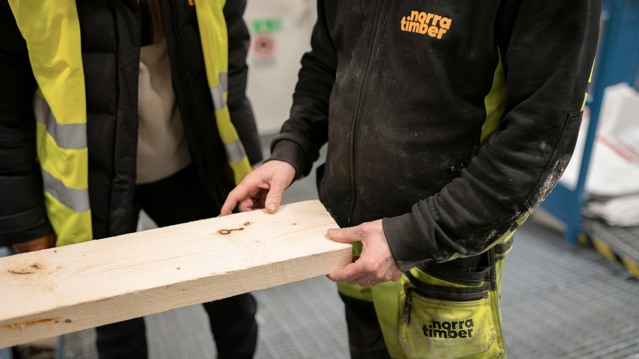Right now forestry raw materials, timber and pulpwood are at prices not seen since the mid-nineties. On the other end of the scale we see forestry products at the bottom of a tough economic cycle, with only steel performing worse. In the timber-processing industry, where among other things planks and boards are made, there has to be a processing value. But when the cost of raw material is so high, achieving this value becomes difficult.
I believe that production capacity will eventually need to be reduced. Cumulative production in Sweden this year has decreased by three percentage points compared to last year. In Finland production capacity has decreased by six percent in its sawmills. If this tough economic climate continues, production capacity in the industry will be forced to decrease as production stops. Should this happen then closures of timber industries in the Nordics cannot be ruled out.
If you look at the world’s largest timber product market – the USA – you’ll see that prices for sawn timber products bottomed out at an all-time low in July. And such low prices meant that production was cut back sharply.
Interest rates in the USA are currently even higher than in Europe. A common tactic when fighting high inflation is to raise interest rates. This means you may not buy that summer cottage you always wanted, or start that construction project you had planned.
Then we have another big market – China – where there’s a real construction crisis going on. They have built and built, and their massive property development companies now have a lot of properties that are difficult to sell.

Things look more positive when it comes to Norra Timber’s stock development compared to the rest of the industry. The company’s inventory remains unchanged, which shows it has sold more than its competitors. The truth, however, is that Sweden’s timber stockpile increased during the spring and summer, which represents a dark cloud hanging over the industry. Stocks are increasing and production is decreasing, despite it being the peak sales season – which is very unusual.
The production rate in northern Sweden has fared well in comparison with the rest of Sweden – and particularly Finland – but critical issues remain the cost and availability of raw materials. Today, 70–80 percent of a sawmill’s costs comprise the purchase of timber. In order for things to make sound economic sense that number should be no more than 60 percent.
I believe there will be three interest rate cuts this year and an additional two to three interest rate cuts next year. I also predict the repo rate will go down to two percent by next fall, which would allow construction to start again in earnest!
